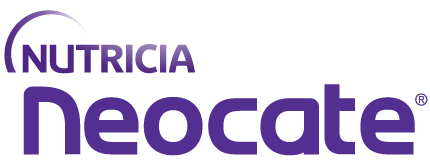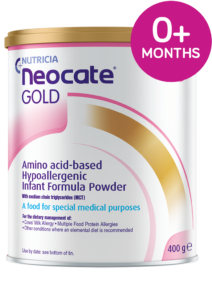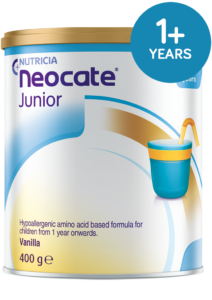Common cows’ milk allergy symptoms
Key takeaways
- Identify symptoms of cows’ milk protein allergy
- Learn about when to visit a doctor or healthcare professional for diagnosis is indicated

It’s not always easy to spot the symptoms of food allergies. Diagnosis of cows’ milk protein allergy (CMPA) can be difficult as the symptoms are also common to many other conditions seen in infants and children.
Cows’ milk protein allergy symptoms may occur immediately, or the reaction may be delayed.1
Immediate reactions may occur within minutes to two hours after consumption of cows’ milk protein (the protein found in cows’ milk). These reactions are generally quite obvious and therefore easy to diagnose. They can be confirmed with allergy testing. Symptoms can include:1,2
- Hives
- Eczema
- Face swelling
- Vomiting
- Diarrhoea
- Noisy breathing or wheeze
- Anaphylaxis (severe allergic reaction) may cause floppiness in babies
Delayed reactions to cows’ milk may take up to several hours to days to appear. They are less obvious, and this can make diagnosis more difficult for these infants and children. Allergy tests are also not often useful in these cases. The following may be clues to a delayed reaction to cows’ milk:2
- Eczema
- Diarrhoea
- Colic
- Wheezing
- Vomiting
- Reluctance to feed
As there can be many causes of these symptoms, diagnosis of CMPA can take time. This period can be difficult not only for the child but for the parents too. So, what can you do if you suspect your child may be allergic to cows’ milk protein?
- Make an appointment with your child’s doctor
A reliable diagnosis of CMPA is important. The doctor will be able to assess your child’s symptoms and rule out other causes. They may also be able to refer you to an allergy specialist if necessary.
- Get the facts
Find out a little more about CMPA – this website is a good place to start. It will give you confidence when talking to healthcare professionals and tell-tale signs to be aware of.
- Keep a diary
The more familiar you are with your child’s symptoms, the easier it will be for a CMPA diagnosis to be made by the doctor. A good way to do this is to keep a daily diary of your baby’s diet and symptoms. This can sometimes be difficult if reactions are delayed but it is nevertheless a good place to start.
- Trust your instincts
Often parents will have a ‘sixth sense’ when something is out of the ordinary. Nobody knows your baby as well as you do, so trust your parental instinct when deciding if further action is called for.
The Symptoms Checklist
If you have found one or more symptoms mentioned in the article above match with what your child is experiencing, the questions listed in the Symptom Checklist may help you to find out if cows’ milk protein allergy could be a potential cause.The results of the Symptom Checklist should be discussed with your child’s treating healthcare professional to determine appropriate diagnosis and management options.
The Symptoms Checklist is not intended to be a substitute for medical advice. Always consult your doctor.
Donwload ChecklistReferences:
- Australasian Society of Clinical Immunology and Allergy (ASCIA). Cows’ milk (dairy) allergy 2019. Available from: http://www.allergy.org.au/patients/food-allergy/cows-milk-dairy-allergy (Accessed June 2021).
- Vandenplas Y, et al. Guidelines for the diagnosis and management of cows’ milk protein allergy in infants. Arch Dis Child. 2007;92:902-908.






